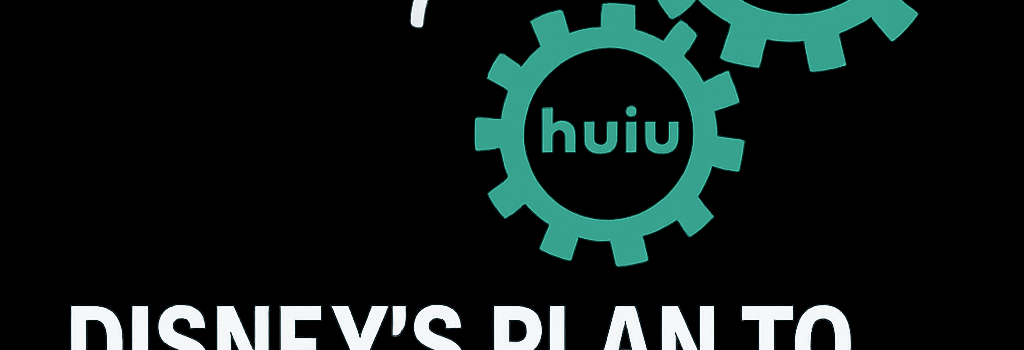Disney’s Plan to Integrate Hulu into Disney+

A Streaming Merger Worth Watching
Disney CEO Bob Iger announced in August 2025 that Hulu will be fully integrated into the Disney+ app by early 2026. While standalone Hulu subscriptions will technically remain available, insiders question how long Disney will maintain a separate Hulu client once the unified platform delivers a seamless user experience.
Integration Roadmap and Timeline
Initial steps began in March 2025, when Disney introduced a dedicated Hulu tile inside Disney+. Subscribers to both services could already search, browse, and stream Hulu content without switching apps. According to Disney’s Q3 2025 earnings presentation, the full migration involves:
- Re-encoding over 100,000 video assets from formats like H.264 to a uniform H.265 HEVC pipeline for adaptive bitrate streaming (ABR).
- Consolidating user authentication: migrating legacy OAuth2 tokens from Hulu into Disney’s centralized identity provider built on AWS Cognito.
- Unifying advertising tech: transitioning Hulu’s Prebid.js header bidding setup into Disney’s in-house ad platform that uses Google Ad Manager and AWS Lambda edge functions.
- Harmonizing metadata and CMS: merging two GraphQL APIs and normalizing schema for titles, genres, and “continue watching” progress.
Technical Architecture Behind the Integration
Disney’s engineering teams adopted a microservices architecture hosted across multi-region AWS and Google Cloud Platform clusters. Key components include:
- Transcoding Pipeline: Built on FFmpeg and AWS Elemental MediaConvert, it supports HLS and MPEG-DASH with CMAF packaging for sub-second latency on FAST channels.
- Content Delivery Network: A mix of CloudFront and Akamai to optimize global reach, with real-time edge caching to reduce round-trip times (RTTs) for 4K and HDR streams.
- DRM Layer: AES-128 encryption and Widevine/CENC integration via Google’s open-source Shaka Packager to enforce geo-licensing and account-based decryption.
- Service Mesh: Istio provides telemetry, circuit breaking, and secure mTLS between backend services, enhancing resilience during peak events like live sports.
Recommendation Engine Upgrades
Iger emphasized that improved personalization will lower churn. Disney+’s recommendation system, powered by a hybrid of collaborative filtering and deep learning models, has been extended to include Hulu’s mature content library. Enhancements include:
- Feature-rich user vectors combining watch history, time-of-day patterns, and cross-platform session data.
- An AI-driven ranking layer using TensorFlow Extended (TFX) pipelines retrained weekly to factor in seasonal trends and new releases.
- Contextual promotions within the UI, such as “Binge-worthy Comedies” or “New Drama Premieres,” surfaced via real-time A/B testing with 1% sample traffic.
Business and Market Implications
“The way to look at the combination is to start with the consumer. You’re going to end up with a far better consumer experience when those apps are combined… And obviously with an improved consumer experience comes the ability to lower churn,” – Bob Iger (Disney Q3 2025 Earnings Call)
Hulu reports 55.5 million subscribers (Q3 2025), less than half of Disney+’s 127.8 million. Yet Hulu’s average revenue per user (ARPU) of $12.40 outpaces Disney+’s $7.68. Retaining standalone Hulu risks cannibalizing these higher-value subscriptions, but folding them into Disney+ may unlock operational efficiencies:
- Lower maintenance costs: one client, single QA cycle, unified CI/CD pipelines.
- Ad revenue upside: integrated ad breaks allow cross-selling of premium and FAST inventory based on viewer demographics.
- Bundling power: the $11/month Disney+/Hulu bundle incentivizes subscribers to stay within Disney’s ecosystem instead of gaming churn by toggling services.
Global Expansion and International Strategy
Disney also plans to roll out the Hulu brand internationally, replacing the “Star” hub on Disney+ in Europe, Latin America, and Asia-Pacific. This move:
- Standardizes the brand architecture, using Hulu as the global general entertainment tile.
- Aligns licensing and rights management with Disney’s regional master content agreements.
- Leverages localized FAST channels—such as a 24/7 anime stream in Japan—powered by Disney’s FAST Onion architecture on AWS Lambda@Edge.
Expert Perspectives
Robert Fishman (MoffettNathanson): “Integration should reduce fixed overhead, but the key metric is net subscriber growth versus churn. Disney’s ability to upsell ads and FAST tiers will determine the ROI of this merger.”
Laura Martin (Needham & Company): “The unified app positions Disney to rival Netflix’s recommendation technology and Peacock’s free tier. The risk is overloading consumers with too much content and navigation complexity.”
Future Outlook
As Disney moves toward full integration in 2026, the streaming landscape braces for further consolidation. Technically, mastering one platform simplifies deployments and accelerates feature rollout. Strategically, it fortifies Disney’s position against Netflix, Amazon Prime Video, and emerging FAST services.
Subscribers should watch for new ad-supported tiers, low-latency live sports enhancements via WebRTC-based streaming for ESPN+, and deeper AI-driven personalization aimed at engaging dialog-heavy applications like interactive storytelling.